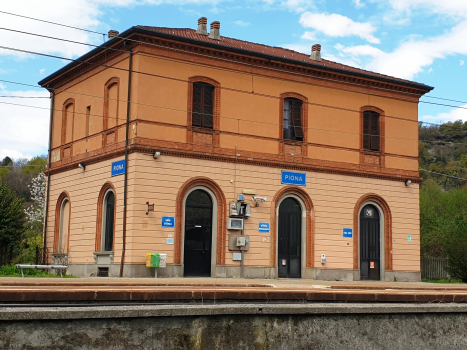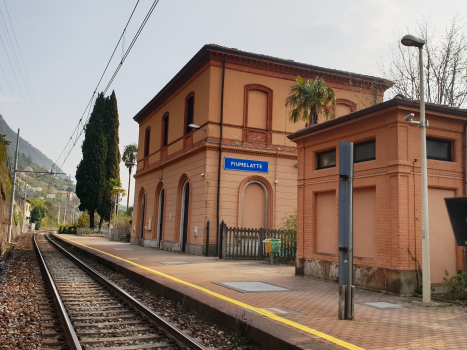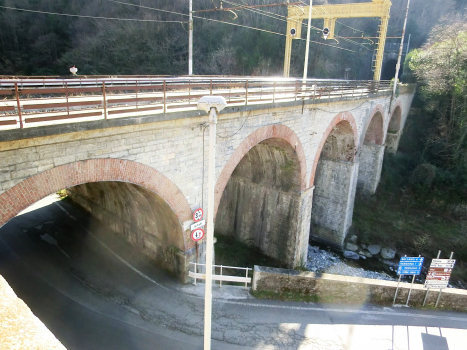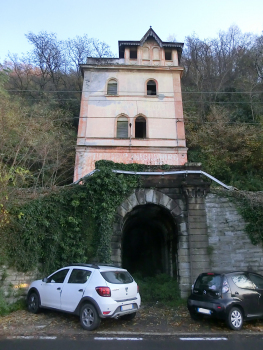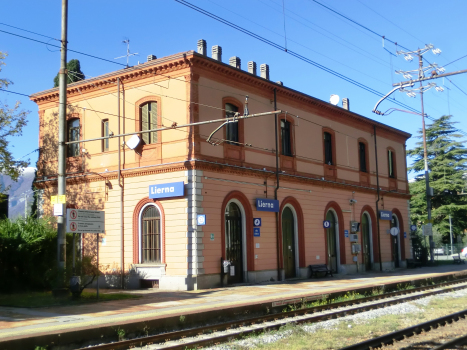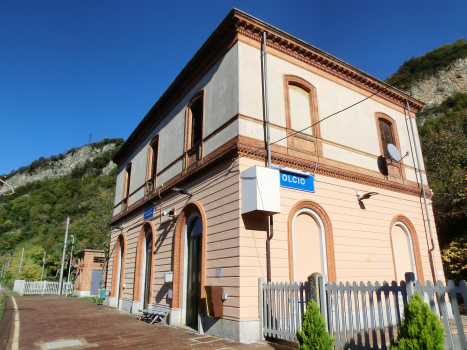General Information
| Name in local language: | Ferrovia della Valtellina |
|---|---|
| Beginning of works: | 1885 |
| Completion: | 1894 |
| Status: | in use |
Project Type
| Function / usage: |
Railroad (railway) line |
|---|
Location
| km | Name |
Technical Information
Dimensions
| total length | 105 km | |
| number of tracks | 1 | |
| track gauge | 1 435 mm |
Chronology
| 16 June 1885 | Section Colico-Sondrio opened to train service |
|---|---|
| 9 September 1886 | Section Colico-Chiavenna opened to train service |
| 1 July 1892 | Section Lecco-Bellano opened to train service |
| 1 August 1894 | Section Bellano-Colico opened to train service |
Notes
Excerpt from Wikipedia
The Ferrovia della Valtellina (Valtellina railway) is a railway line in Italy that runs from Lecco to Valtellina and Valchiavenna. It was opened in 1894 and electrified on the three-phase system in 1902. It is now electrified at 3 kV direct current and operated by Trenord.
History
The line was built in stages between 1885 and 1894. Two large railway companies dominated the area at the time. They were the Rete Adriatica (Adriatic network) and the Rete Mediterranea (Mediterranean network). With the opening of the Colico-Bellano section, on 1 August 1894 a complete railway service started.
Electrification
The Valtellina railway is notable for being an early user of electric traction. It was the first in Italy and the first in the world to use high-voltage three-phase alternating current for rail traction. On 15 October 1902 the electrification began on the Lecco-Colico-Chiavenna and Colico-Sondrio sections with overhead power lines at 3,000 V, 15 Hz. The frequency was later raised to 15.8 Hz for reasons unknown. Finally, the voltage and frequency were raised to 3,600 V, 16.7 Hz, which became an Italian standard. Power was supplied by the Campovico hydroelectric plant.
The line is now electrified with 3 kV direct current.
The route
The line was built with great technical daring but the Lecco-Colico-Chiavenna section now shows ist age. Over the 40 kilometres to Colico there are 89 curves, 18 viaducts and 19 tunnels. However, the line, which runs along the eastern shore of Lake Como with ist jagged coastline, offers passengers enchanting views of inlets in which can be seen patrician villas, lush vegetation and lake marinas.
Tirano station is an interchange point for travellers who want to go to Switzerland on the Rhaetian Railway, a narrow-gauge line, departing from the aforementioned station that follows a route that reaches 2,253 metres in height and the famous tourist station St. Moritz.
Traffic
The line is used by regional trains of Trenord which run along the Sondrio-Lecco and Sondrio-Tirano routes (stopping at all stations), and from Regio Express trains - until 2007 called Diretti - of Trenord, many of which travel the entire Tirano route to Milan Central.
From December 2014, on public holidays and the month of August the Regional trains of Lecco-Sondrio terminate at Colico and are replaced by buses for the remaining section.
Text imported from Wikipedia article "Ferrovia della Valtellina" and modified on February 10, 2021 according to the CC-BY-SA 4.0 International license.
Participants
Currently there is no information available about persons or companies having participated in this project.
Relevant Web Sites
- About this
data sheet - Structure-ID
20080594 - Published on:
24/01/2021 - Last updated on:
04/04/2022


